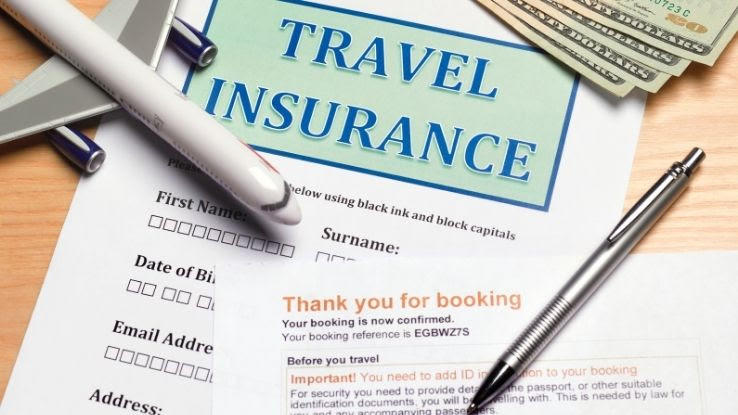The 15-Second Trick For Pacific Prime
Table of ContentsThe Only Guide to Pacific PrimeGetting My Pacific Prime To WorkWhat Does Pacific Prime Mean?The 20-Second Trick For Pacific PrimeAll about Pacific Prime

This is due to the fact that the information were gathered for a period of strong economic performance. Of the estimated 42 million people who were uninsured, all yet regarding 420,000 (regarding 1 percent) were under 65 years of age, the age at which most Americans become eligible for Medicare; 32 million were grownups between ages 18 and 65, about 19 percent of all adults in this age; and 10 million were kids under 18 years old, regarding 13.9 percent of all children (Mills, 2000).
These price quotes of the number of individuals uninsured are produced from the annual March Supplement to the Present Populace Study (CPS), conducted by the Census Bureau. Unless or else kept in mind, nationwide estimates of individuals without medical insurance and proportions of the population with various type of insurance coverage are based upon the CPS, the most widely used source of quotes of insurance policy protection and uninsurance prices.
More About Pacific Prime

Still, the CPS is particularly helpful because it creates annual estimates fairly swiftly, reporting the previous year's insurance coverage estimates each September, and due to the fact that it is the basis for a constant set of estimates for greater than twenty years, enabling for analysis of fads in insurance coverage with time. For these factors, in addition to the substantial use the CPS in various other researches of insurance policy protection that are provided in this report, we count on CPS quotes, with constraints kept in mind.

The price quote of the variety of uninsured individuals broadens when a population's insurance status is tracked for several years. Over a three-year period beginning early in 1993, 72 million individuals, 29 percent of the united state population, lacked protection for a minimum of one month. Within a single year (1994 ), 53 million individuals experienced at the very least a month without protection (Bennefield, 1998a)
6 out of every 10 uninsured adults are themselves employed. Working does boost the possibility that one and one's household members will certainly have insurance, it is not a warranty. Even participants of families with 2 full-time breadwinner have almost a one-in-ten opportunity of being without insurance (9.1 percent uninsured price) (Hoffman and Pohl, 2000).
Our Pacific Prime Diaries
New immigrants account for a considerable percentage of individuals without medical insurance. One analysis has actually connected a significant portion of the recent growth in the dimension of the U.S. uninsured populace to immigrants who arrived in the nation between 1994 and 1998 (Camarota and Edwards, 2000). Recent immigrants (those that concerned the United States within the previous four years) do have a high rate of being without insurance (46 percent), however they and their youngsters account for just 6 percent of those without insurance coverage nationally (Holahan et al., 2001).
The connection between medical insurance and accessibility to care is well developed, as documented later in this chapter. The connection between health and wellness insurance policy and wellness end results is neither straight nor basic, an extensive clinical and health and wellness solutions research study literature web links health insurance protection to better access to care, far better top quality, and boosted individual and populace health status.
Levels of analysis for checking out the effects of uninsurance. This conversation of health insurance policy coverage focuses largely on the united state populace under age 65 since essentially all Americans 65 and older have Medicare or other public coverage. In addition, it concentrates particularly on those with no wellness insurance policy for any type of size of time.
Not known Factual Statements About Pacific Prime
The problems dealt with by the underinsured remain in some areas comparable to those encountered by the without insurance, although they are generally much less serious. international health insurance. Uninsurance and underinsurance, nevertheless, entail clearly various policy problems, and the strategies for resolving them may vary. Throughout this research and the 5 records to comply with, the primary emphasis is on individuals with no medical insurance and thus no help in spending for healthcare beyond what is offered via charity and safeguard organizations
Health and wellness insurance is a powerful variable impacting receipt of treatment since both patients and medical professionals reply to the out-of-pocket cost of solutions - http://go.bubbl.us/e0d727/3ee9?/New-Mind-Map. Health insurance, nonetheless, is neither essential neither adequate to get to clinical solutions. The independent and straight effect of wellness insurance policy coverage on access to wellness services is well developed.
Others will get the health treatment they require also without wellness insurance, by spending for it expense or seeking it from suppliers that provide treatment cost-free or at extremely subsidized rates. For still others, medical insurance click here for more info alone does not guarantee invoice of care as a result of other nonfinancial obstacles, such as an absence of health and wellness treatment companies in their area, restricted accessibility to transportation, illiteracy, or linguistic and social distinctions.
Pacific Prime - Truths
Formal research study concerning uninsured populaces in the United States dates to the late 1920s and early 1930s when the Committee on the Price of Treatment generated a series of reports about financing medical professional office gos to and hospitalizations. This issue came to be salient as the varieties of medically indigent climbed throughout the Great Anxiety.